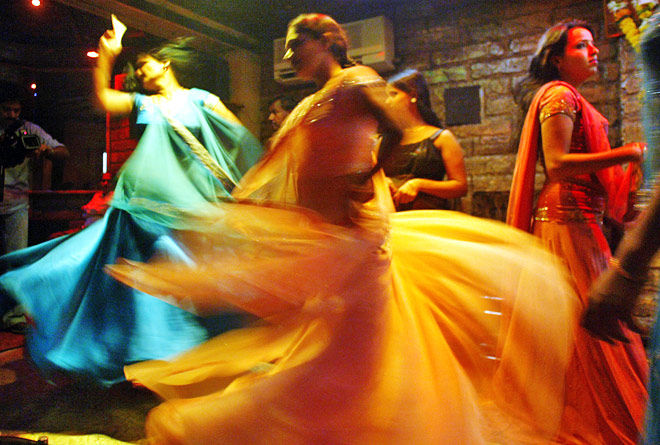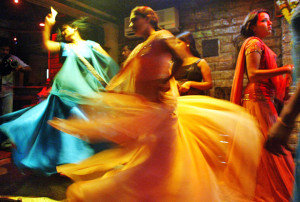In context of Supreme Court judgement on dance bars
We, the undersigned women’s organizations, welcome the Supreme Court judgment that declares the ban on dance bars as violating the Constitution of India.
The Supreme Court in its judgment also further states:
“124. In our opinion, it would be more appropriate to bring about measures which should ensure the safety and improve the working conditions of the persons working as bar girls. In similar circumstances, this Court in the case of Anuj Garg (supra) had made certain observations indicating that instead of putting curbs on women’s freedom, empowerment would be more tenable and socially wise approach. This empowerment should reflect in the law enforcement strategies of the State as well as law modelling done in this behalf. In our opinion, in the present case, the restrictions in the nature of prohibition cannot be said to be reasonable, inasmuch as there could be several lesser alternatives available which would have been adequate to ensure safety of women than to completely prohibit dance. In fact, a large number of imaginative alternative steps could be taken instead of completely prohibiting dancing, if the real concern of the State is the safety of women.”
In light of this Supreme Court judgment we state that the State Government needs to take the following steps to abide by the Supreme Court order and to remedy the gender bias and caste apartheid practiced by it.
I. The Government needs to pay compensation to all the bar dancers for causing economic harm, psychological damage, destruction of family welfare, enhancing social stigma, endangering their health and the health of their families:
Most of the women dancers have incurred enormous loans to cope with the situation during the period of the ban. The State government must provide them compensation for the entire period of the ban.
Many women have been forced to commit suicide or have attempted to do so. Some of these cases have even been reported in the newspapers.
Most women had to withdraw their children from school, as they could not afford the expenses related to schools. These children have lost many years of their schooling. The attempts by the women to right the wrong perpetrated by the Government by depriving their children and siblings of education has been reduced to naught by the actions of the Maharashtra Government.
The ban and the announcements and pronouncements by the Maharashtra Government further contributed to the deterioration in the social status of the women dancers. The baseless and obscene charges of the Government in the media and the court rendered most of the 75,000 women even more vulnerable and unemployable. Many of them were even thrown out of their rented accommodation.
A large section of the women dancers come from castes wherein dancing by women of the community was the traditional means of livelihood. These castes and communities have for generations been denied any opportunity to acquire any other skills. They have been deprived of education and skill-training. In the light of such massive levels of deprivations and denial, most of these women have no other avenue but to enter into their caste based professions. The Government has made no effort to do away with this Caste Discrimination. On the contrary, by imposing a ban on dancing in bars, the Government further pushed the women into even greater levels of starvation.
Many elderly people and other members of the households of these women have not been able to access health care for the last 8 years since the women were compelled to stop earning.
This in fact is an argument that has been advanced by the Maharashtra Government itself to the Supreme Court in this very case. This is as follows:
“105. The next justification ……. is on the ground that the women who perform in the banned establishment are a vulnerable lot. They come from grossly deprived backgrounds.”
II. There should be regularization of the working conditions of dance bar women: In accordance with the Bombay High Court order, there were beginnings of attempts wherein Bar Dancers’ Association / Union , Bar owners’ Associations and women’s organizations had come together to form a grievance cell, which would look into issues arising out of service conditions in dance bars. These would include monitoring the situation so no minors are forced to work in the dance bars. Such a Grievance cell should be granted legal authority to function as Advisory and Drafting Committee to formulate proper service conditions and look after their implementation.
The Mathadi Act promulgated in 1969 in the state of Maharashtra seems most applicable to the situation of the dance bar women. The waste pickers of Maharashtra have also demanded that they be included in the Mathadi Act. There are attempts to argue that domestic workers be also included. These inclusions are likely to need some amendments in the Mathadi Act itself.
Some of the rights that women working in bars need are:
- Monitoring and prevention of entry of children into the bars as dancers or in any other capacity
- Safe working conditions and protection against harassment from employers, co-workers, customers, the police and other officials.
- Right to dignity and better treatment from employers, co-workers, customers, the police and other officials.
- Protection against forced sexual relations and harassment
- Protection against unfair practices of employers and the state
- Right to a fallback minimum remuneration
- Security of earning
- Maternity benefits
- Medical benefits
- Crèche facilities for their children
- Better facilities for good and nutritious food at the dance bar
- Better resting facilities and an agreed upon break time
- Paid weekly off
- Provisions for health and safety
- Access to education, training and acquisition of skill of their choice
- Retirement benefits and post-work life benefits like pensions or superannuation funds.
III. Clear policy against Police Harassment and caging women in remand homes:
Not only Police but various members of civil society have started systematically abusing bar dancers, even more since the ban. This was partly due to the Government’s anti-women announcements in the media about bar dancers being a depraved lot. Over the years, the police began carrying out raids of bars. The police began to arrest women indiscriminately. Some of the women who were working in the bars were taken under PITA and put in remand homes. Many of them were languishing in the remand homes in terrible conditions till the intervention by the High Court of Bombay in December 2012. These were women who were merely standing or serving drinks, a perfectly legal activity even under the law that was just struck down by the Supreme Court. They have been humiliated and abused while in lockup or in remand homes.
IV. Clear Cause for reparation:
It must be publicly recognized that most of the women dancers have been discriminated against due to gender, caste, poverty much before they entered the Dance Bars.
The ban by the Government which declared the means of livelihood of these women as illegal amounts to caste apartheid. The Supreme Court has termed the decision of the Government to ban the dancing in bars `elitist’.
At an international level, over the years, apartheid in South Africa became recognized as a crime against humanity and a threat to peace, so that international sanctions could be imposed.
In India over centuries caste apartheid has been practiced by society, though it is punishable by law. The 2005 legislation of the Maharashtra Government banning bar dancers amounts to specifically targeting these women, who have for generations, been discriminated against on the basis of their caste. This was nothing short of caste apartheid brought in through legal undemocratic means due to the misogyny of the political class.
V. The State Government should render an apology to the women bar dancers for further victimizing the victims and practicing caste apartheid. This is not to say that the apology would bring automatic justice. But the demand for justice and legality is an essential element in the struggle for a just cause. It also would create a situation whereby Governments would be more responsive and accountable before they snatch people’s livelihoods. It is necessary to underline that a State that cannot provide livelihood to women have no right to and should be the last to deprive them of their jobs.
VI. As a longer term perspective, there is a need for a development model that increases rather than reduces options of women. There need to be greater choices for women to choose their livelihood options and employment. Today women and men are forced into occupations that are caste determined, may those be related to sweeping and cleaning, including sewages, carrying of night soil, dance work or sex work. This needs to change. It is also the responsibility of the state to devise concrete policies, programs and schemes that aggressively attack the caste system and provide opportunities for people to do work of their liking and choice. Like many domestic workers, construction workers, factory workers, agricultural workers, we have worked and interacted with, there is a section of women in this occupation too who would rather do other work. The situation of lack of options in livelihood and occupations needs to be seriously addressed by the government by working towards a development and growth model that is people-friendly and that creates more options for women rather than reducing the few that exist today.
FORUM AGAINST OPPRESSION OF WOMEN
and more than 100 endorsements including organisations and individual s


Leave a Reply